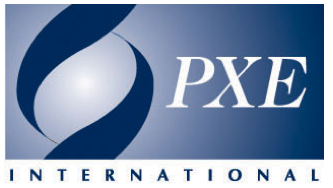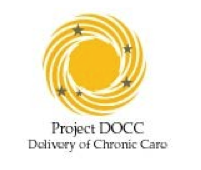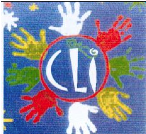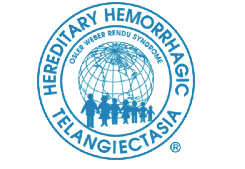Difference between revisions of "Your Organization's Name Is Important"
| Line 81: | Line 81: | ||
"Second to our disease description and research updates, the most commonly copied MLD item is our logo butterfly. Often it's for a private fundraisers (or tattoos!). They equate, thanks to our hard work, our butterfly logo with the disease so it makes sense to them. We usually will grant permission to use the butterfly, as long as our URL and the copyright symbol are both present. Where possible, we try to keep the branding colors intact, too. We often give use permission for private fundraisers as long as they make it clear that donations are not coming to us and are not tax deductible. This builds awareness of and credibility for our organization, strengthens relationships, and often nets us some direct or indirect donations." | "Second to our disease description and research updates, the most commonly copied MLD item is our logo butterfly. Often it's for a private fundraisers (or tattoos!). They equate, thanks to our hard work, our butterfly logo with the disease so it makes sense to them. We usually will grant permission to use the butterfly, as long as our URL and the copyright symbol are both present. Where possible, we try to keep the branding colors intact, too. We often give use permission for private fundraisers as long as they make it clear that donations are not coming to us and are not tax deductible. This builds awareness of and credibility for our organization, strengthens relationships, and often nets us some direct or indirect donations." | ||
| − | More information on the use of logos for fundraising is available on the Fundraising page. | + | More information on the use of logos for fundraising is available on the [Fundraising http://wikiadvocacy.org/index.php/Fundraising] page. |
==Changing Your Organization's Name== | ==Changing Your Organization's Name== | ||
Revision as of 14:28, 31 October 2014
It may seem that this should not even warrant discussion. You can call your organization whatever you like, right? Yes and no. A name has strategic implications. Just as we think the terms we use for the people we serve are important, the name of your organization is important. Consider the following issues about your organization's purpose and its name:
- Will your organization be solely focused on one condition?
- Should it include the name of the condition?
- Will it serve a number of conditions?
- Will it be local, regional, national or international?
- Will it focus more on education, research, support or advocacy?
- How will the name be perceived?
- Is the name easy to say, to write, to abbreviate?
- Do you want it to appear at the top of alphabetically arranged lists?
- Is an associated domain name available for a website?
- Is someone else already using the name?
You are in the best position to decide which questions are important. Much of this will have to do with your mission and how you will market it. For example, Genetic Alliance was called the Alliance of Genetic Support Groups for the first 10 years of its existence. Over time, the genetics community matured, and two changes occurred: support groups began to offer more than support, and the Alliance membership grew to be very diverse, encompassing genetics professionals, industry, clinics, hospitals and more. The name needed to more accurately reflect the organization.
Naming Our Organization
- Sue Friedman
- FORCE (Facing Our Risk of Cancer Empowered)
"Initially we were Women At Risk. At the time I had no idea about any of the legal issues associated with a name. The name was available in Florida according to our corporate attorneys. But nobody suggested getting a trademark until AFTER we were incorporated. By the time I learned that there were other nonprofits with a similar name and that our chance of trademarking the name was slim to none, I had already invested money in logo development, domain names, incorporating, and applying for the trademark.
So we had a chat for our members where we tried to come up with a new name. It was hilarious. We just really let loose and let humor take over - for the sake of decency I won't share. In the end I took words that I liked for a name and tried to figure out an acronym that was at least as empowering as WAR.
We settled on FORCE: Facing Our Risk of Cancer Empowered, which I now like much better and have had a lot of great feedback on. I just wish I knew the process and the order I should have done it in. Trademark search first, if it's available or seems to be available, then consider domain purchases and incorporating."
Finding a Logo
- Mary Davidson, Executive Director, 1996-2003
- Genetic Alliance
"We felt that the somewhat geometric logo of the Alliance of Genetic Support Groups served it well for over 10 years. It also became clear that with the name change, there should also be a new logo - one that clearly showed the centeredness of people in the maturing organization. At the same time we were planning the "People's Genome Celebration" and thought that a symbol that emphasized the concept of people being central to genomics would convey a critical message. A PR firm made a few attempts and none seemed to hit the mark. We invited an amateur volunteer, Patrick Terry of PXE International, to try his hand. We liked what he produced and we had a new brand!"
Do you need a design firm or PR firm to brand your organization? This is one area where you can use professional services or luck out with an amateur designing your logo. You may be able to get professional services for free, as a way for the designer to make a contribution to community (and get some visibility). A talented amateur may have a better sense of the nuances of your organization's mission. Or use a combination of artists. Or have a contest!
Consider carefully the image your organization shows to the world. It may be all that people will know of you. Decide whether you want to emphasize competence, warmth, growth, ability to respond, and/or cutting-edge ability. As Project DOCC's Maggie Hoffman notes, a logo "needs to present a message as well as an identity."
Finding the Right Logo: Stories from Advocacy Organizations
- Maggie Hoffman, Co-Founder/Co-Director
- Project DOCC: Delivery of Chronic Care
"We are on logo number three. Volunteers designed our first two logos. Our greatest difficulty is that in exchange for the donated service, we were given NO INPUT. We respected egos but never felt well served by the identity either of the designs portrayed. A volunteer also created the third design. It took a tremendous amount of courage for us at Project DOCC, Inc., to "give her direction." She was extremely generous and recognized that we needed our logo to present a message as well as an identity. Thankfully, three was our lucky number and our logo feels just right."
- Marie-Claude Boiteux
- Cutis Laxa Internationale
"Our logo has quite a story. We moved to the Ile de© five years ago. When we left our former house, the kids at the school where Cecile used to go gave her a big drawing they made for her. Each one of them had printed his own hand around a circle (the earth) inside of which was drawn the Ile de©. They also wrote a poem saying "She's called Cecile, She moves to an island, Her school was in Saint Bonnet, Now it will be on the Ile de©, Good Luck Cecile."
When we discussed the future logo of the Association, one of us thought of this picture. On it, there was everything we wanted as symbols of CLI : the earth, hands of different colors, the Ile de©, where CLI was established. And too, we realized that there were eight hands (Cecile was in a very small school in the mountains) and, in the beginning we knew of eight sufferers. So we took a photo of this picture and our Vice-Chair created the Logo, placing "CLI" inside the circle. I sent a letter to the school of the Saint Bonnet to tell the kids their drawing had become our logo, and they were very happy."
- Trish Linke
- Hereditary Hemorrhagic Telangiectasia Foundation
"My mother, who had HHT, designed our logo in 1993. She drew it by hand and I made it into a picture file on the computer. It was intended to encompass the international and familial nature of our disorder, which I think it does. The board voted to accept it as our logo at our second annual conference in San Francisco that same year."
Control of Your Logo and Name
As more individuals want to be involved with your organization, you may find that you want to put in place some rules or policies that govern the use of your organization's name and/or logo. Points to consider include:
- Will you have an informal or formal process for approval or consideration?
- Who will approve or disprove requests within your organization? How will that be communicated (i.e. in writing?)
- Do you want to specify what members can ask to use your logo/name?
- How will you handle requests for endorsements that may conflict with the interest of some of your members?
One organization's approach is:
"We uploaded a PDF image of our flyer and brochure to our internet site. Before somebody opens the document, they can see the rules for using it. We ask our members to tell us how many they distribute.
Each brochure has a space on the back that says "This brochure was printed and distributed by somebody in your community. This person is / is not (circle one) a trained PAGER Volunteer. Right below, is an empty box for the person to put their name if they wish. It is the right size for a doctor's office to put their address stamp."
Another organization's approach is:
- Dean Suhr
- MLD Foundation
"Second to our disease description and research updates, the most commonly copied MLD item is our logo butterfly. Often it's for a private fundraisers (or tattoos!). They equate, thanks to our hard work, our butterfly logo with the disease so it makes sense to them. We usually will grant permission to use the butterfly, as long as our URL and the copyright symbol are both present. Where possible, we try to keep the branding colors intact, too. We often give use permission for private fundraisers as long as they make it clear that donations are not coming to us and are not tax deductible. This builds awareness of and credibility for our organization, strengthens relationships, and often nets us some direct or indirect donations."
More information on the use of logos for fundraising is available on the [Fundraising http://wikiadvocacy.org/index.php/Fundraising] page.
Changing Your Organization's Name
As time progresses, science oftentimes drive a shift in the nomenclature and classification of the diseases foundations cover. In these cases, organizations may consider altering their name or logo.
One suggestion is to not reduce the name of an organization to an acronym, as that can reduce hits on web sites in search engines and also confuse visitors to your web site about your mandate and history. Also, be sure not to drop the scientific and medical terms of your foundation’s condition given that that is the term used in standard sources such as PubMed and a lot of literature that is still being generated.
Here are some stories from other organizations who have been through the same process.
Genetic Alliance
Genetic Alliance did this! We were the Alliance of Genetic Support Groups for the first 14 years of our existence, and became Genetic Alliance in about 2001 or so we chucked our logo, branding – all of it. I think it was very successful!
Joubert Syndrome & Related Disorders Foundation
The Joubert Syndrome & Related Disorders Foundation has been alive and vibrant since 1992.
It started as the Joubert Syndrome Parent's Network then became the Jobert Syndrome Foundation. After some genetic research showed that JS would be related to other cerebellar disorders, we went to The Joubert Syndrome Foundation and Related Cerebellar Disorders.
Recent findings have shown that JS is also a ciliary disorder: Not wanting to change the name every time we find new "relations", we are now the JSRDFoundation.... and we are currently looking into moving to the third logo.
To my knowledge, we haven't lost anyone in the growth!
International Society for Mannosidosis and Related Diseases
ISMRD started out as the International Society for Mannosidosis and Related Diseases. Some years later nomenclature and family identification with the disease grouping (Mannosidosis is one of 9 diseases with common characteristics) led us to change our branding to: ISMRD, the International Advocate for Glycoprotein Storage Diseases
But we did not change the formal title of ISMRD. That’s a choice that would involve time, cost and a lot of administrative work, so we kept it as it was. No down-side that we could see, and an easier way to make the change for a very small group with little money.
But be warned. One charitable organization I know of lost a significant legacy because they amalgamated two groups into one, keeping one name and canceling the other. When a benefactor died the will provided for several tens of thousands of dollars to the “old” name that had been wound up, and the executors of the estate would not recognize the new entity as the rightful beneficiary, because they were not called the old name.
The lesson there is to consider keeping the “old” name registered even if inactive – what we would call a “paper” organization – if your legislation allows that to happen, just in case.
General Comments about rebranding
Christy
This comment is about rebranding in general. I respect that you asked about renaming a medical condition. I believe the situations are parallel, but feel free to discount these comments if you feel they do not apply.
Rebranding is an expensive and risky proposition.
Two hard lessons from the business world.
1. Nissan came to the US as Datsun. When Nissan worldwide decided it had been a mistake to call its US brand Datsun, they executed a brand name change that was disastrous. Despite spending millions of dollars (at that time) to market the brand change, to this day, many do not make the connection between Datsun and Nissan. The problem was so acute that Nissan bought up all the original iconic Datsun 240Z sports cars, refurbished them to new and marketed them as part of a brand recognition effort under the Nissan name. This, too, was a failure. Few are aware of this extremely expensive publicity stunt.
2. Esso (gasoline and oil company) was a spinoff of the old Standard Oil company. Esso decided to execute a brand name change to become Exxon. "Esso is Exxon now" was a slogan that was promoted for a very long time, and the rebranding effort cost Esso/Exxon $50 million or more at the time. As you may be aware, Exxon moved to acquire Mobil in 1998 and has maintained the Exxon/Mobil brand to this day.
Info on these case histories is readily available on the internet.
Even major corporations struggle to rebrand their identities despite lavishing the efforts with huge budgets.
I worked for a nonprofit organization that chose to rebrand itself. This 20+ year old organization was not well known, but its brand was enough of a "household word" that most people could generally recognize the brand and provide a rudimentary description of its mission. But legislative advocacy was part of the organization's mission and the brand was something of a liability, because the organization's mission was one that legislators could not openly embrace without damaging their relationships with at least part of their voting constituency. Against good advice, the board rebranded the organization. Immediately revenues dropped by 75% (yes, three-quarters of their revenues dried up). This 33,000 member organization lost many members who were upset by the name change AND, since the highly visible brand was abandoned, new member recruitment dried up as well. It took them years to recover-and only after they had merged with another organization that was on-quarter their former size and budget.
Factors to consider in evaluating renaming the condition around which your organization has built its brand: . How well established is the current name?
o How entrenched is the name in medical literature, public awareness,
and patient awareness?
o How loyal are your members to the current name?
. How different is the proposed new name from the current name?
. How much "better" does the proposed new name fit the condition
than the current name (if at all)?
o What is the motive for the researchers' proposed name change?
. Is the current name medically inaccurate or otherwise
technically confusing?
. Is the current name one that you may one day regret?
. How much does your organization have invested in the current
name?
o What will it cost to make the change:
. Current materials including the website, stationery and so on?
. Public education?
. Lost prospective members?
. Loss of loyalty from current members?
. And so on?
o What might it cost if you don't make the change?
. Lack of respect in the scientific community?
. Damage relationship with researchers?
. Undermine your ability to do successful fundraising?
. Other?
Changing the name will be risky and expensive. Depending on how much better the new name describes the condition, to constituents and medical professionals alike, prospective members of your organization could get lost as they attempt to find you and the care they need. The proliferation of names you already report will make literature searches difficult and require continuous educational efforts to inform both constituents and medical professionals about the evolution of the terminology.
My bottom line is that organizations mess with their brand at their own risk. There had better be some VERY good reasons for the proposed change, and those who propose the change should be willing to shoulder a considerable portion of the burden of bringing the rest of the world up to speed about the name change.



